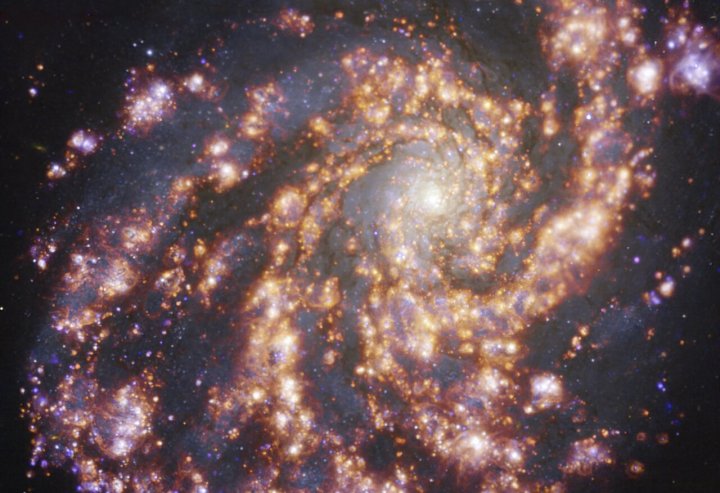
How do stars form? We understand the basics of this process: That gas and dust clumps together, creating gravitational attraction which brings more matter together, until eventually there is enough mass to crush the matter under high pressure and high temperature, birthing a new star. But what initiates this process is not fully understood, and recent images using data from the Very Large Telescope (VLT) could shed light on this question.
A team of international astronomers used the VLT’s Multi-Unit Spectroscopic Explorer (MUSE) instrument along with data from the Atacama Large Millimeter/submillimeter Array (ALMA) to create five images of nearby galaxies which shine like cosmic fireworks as part of the Physics at High Angular resolution in Nearby GalaxieS (PHANGS) project.

As well as being visually striking, these images can help researchers understand how stars are formed in these galaxies. “There are many mysteries we want to unravel,” said Kathryn Kreckel from the University of Heidelberg in Germany and PHANGS team member. “Are stars more often born in specific regions of their host galaxies — and, if so, why? And after stars are born how does their evolution influence the formation of new generations of stars?”

In addition to the data from the VLT and ALMA data, both of which are ground-based telescopes, the team is incorporating data from the Hubble Space Telescope into their project as well. The combination of both space-based and ground-based telescopes has allowed the researchers to see in three different wavelengths: Visible light, near-infrared, and radio.
“Their combination allows us to probe the various stages of stellar birth — from the formation of the stellar nurseries to the onset of star formation itself and the final destruction of the nurseries by the newly born stars — in more detail than is possible with individual observations,” says PHANGS team member Francesco Belfiore from INAF-Arcetri in Florence, Italy. “PHANGS is the first time we have been able to assemble such a complete view, taking images sharp enough to see the individual clouds, stars, and nebulae that signify forming stars.”

However, as sharp as the data from PHANGS is, the researchers want even higher resolution images to see inside star-forming clouds more clearly. In the future, the project will use data from upcoming telescopes like the James Webb Space Telescope or the Extremely Large Telescope to get even more detailed data.

Editors' Recommendations
- James Webb captures the edge of the beautiful Horsehead Nebula
- See planets being born in new images from the Very Large Telescope
- James Webb Space Telescope celebrated on new stamps
- James Webb captures a unique view of Uranus’s ring system
- James Webb telescope captures a dramatic image of newborn star




